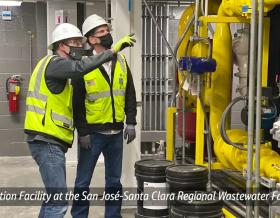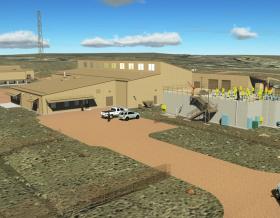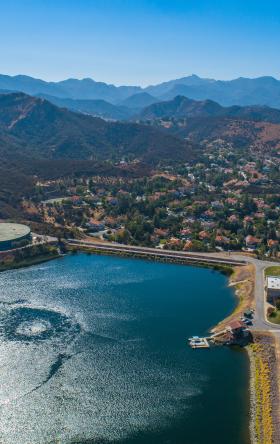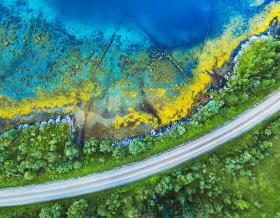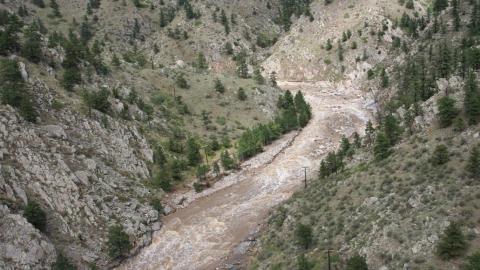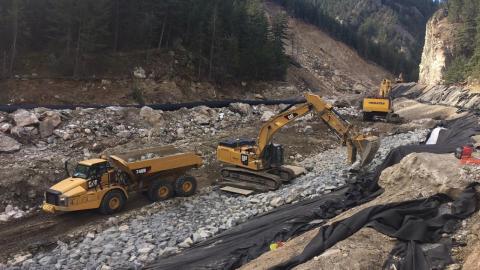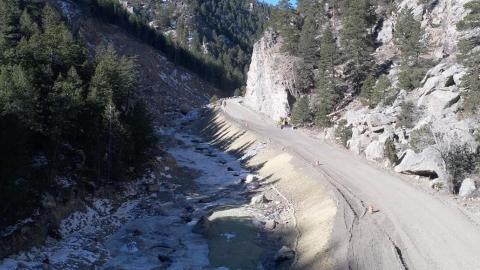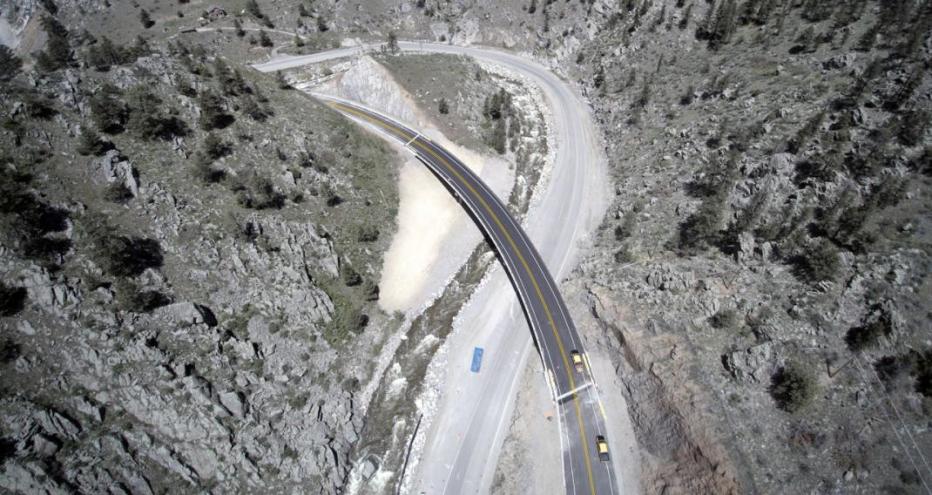
In the fall of 2013, devastating floods caused nearly $4 billion in widespread damage to critical infrastructure, transportation networks, homes and businesses across 24 counties in Colorado.
Especially destructive for mountain and rural corridors north of Denver, floods in the Big Thompson River canyon destroyed more than 10 miles of the U.S. Highway 34 roadway embankment, washed out homes and took the lives of two.
Due to road damages, residents in the canyon were cut off from emergency services and more than 2,000 people needed to be evacuated to safe areas via helicopter.
Looking for a long-term, resilient solution, the Colorado Department of Transportation, inspired by Colorado Governor Hickenlooper’s commitment to “build back better than before,” engaged Jacobs to design 23 miles of repairs to US 34, aimed at implementing a more resilient roadway and prioritizing emergency access for the residents in the next flood event.
-
23
miles of resilient roadway repairs to help connect and protect affected communities
-
15
feet of roadway dedicated for getting people in and out of the canyon during future events
-
$ 4 B
in total flood damages from 2013 event
-
2 K+
people evacuated from Big Thompson River canyon during 2013 floods
“This project was about more than just restoring a 23-mile long section of highway. It was also about restoring the community’s sense of security. Residents in the Big Thompson Canyon experienced an event that took lives, wiped away homes, cars and much of the highway connecting their communities. With the canyon inaccessible by vehicles, the airlift operations that took place in the days after the flood were second only to those conducted for Hurricane Katrina victims.”
Building back better than before
Colorado’s September 2013 floods remain the costliest natural disaster in the state’s history. The extensive rainfall and duration resulted in flow surges exceeding the 500–year flood event.
The Big Thompson River canyons sustained widespread, massive damage. Major sections of the US 34 roadway were washed away completely, along with access bridges and retaining walls. In the “Narrows” section of the canyon, much of the roadway and grade were undermined, washing out the pavement and embankment from below and exposing the wall tie-back support systems. Numerous residents were isolated and cut-off with no access out of the canyon.
Having experienced similar devastation during a 1976 flood, CDOT wasn’t satisfied with implementing a short-term end solution; rather, they committed to completing emergency, temporary repairs, followed by a flexible and resilient permanent solution – engaging Jacobs as the prime consultant and design lead.
Governor John Hickenlooper reassured Coloradans post-flood that the state would “build back better than before,” which guided the innovative design solutions approach for the design team on the complex project that included 23 miles of high-altitude, winding roadway, in a narrow mountain corridor with no cell service.
As infrastructure is increasingly impacted by natural disasters and agencies are challenged to do more with less – incorporating flexible and innovative solutions is key to more resilient upgrades, and quicker, lower-cost repairs in the event of future devastation. On the US 34 project, we implemented several innovative and resilient solutions such as:
Soil cement mixing
By mixing grout and native material under the roadway to form a solid mass to act as an extension of the existing bedrock, we created a solid foundation for portions of the road to allow a 15-foot drivable surface for emergency ingress and egress. This technique had previously been implemented in building construction, but we found a way to apply this solution to the US 34 roadway to extend resiliency and minimize risk in the future.
Swap road and the river
Pre-flood, the ‘horseshoe roadway curve’ was on the outside of the river around a tight bend and the forces of the flood water completely washed out the road. Moving the road to the inside of the river and allowing the river to run its natural course on the outside, keeps the road intact during a flood event, maintaining access through the area –representing another investment in resiliency.
Traffic control
The project took a unique approach to traffic control, closing the canyon to through travel during two consecutive winter seasons. These closures helped maintain public safety while enabling crews to maximize the number of roadway and river corridor resiliencies in a short time frame. Optimizing the traffic control allowed CDOT to invest more of their budget in resiliency in the corridor.
With the new resiliency measures incorporated into the project, canyon residents will have, at a minimum, emergency access through the corridor during the next event. The solutions built will have a positive impact on the local economy because for 2.5 months after the 2013 flood, the corridor provided limited or no access to Estes Park, negatively impacting the local and state tourism industry. The resilient solutions will minimize the degree of devastation in the next event, significantly reducing the amount of time and expense it will take to rebuild and restore access to Estes Park – meaning, tourism for the local economy and state will rebound quicker.
The community can now rest easy knowing that our team delivered on the pledge to “build back better than before.”
The US 34 Big Thompson Canyon Permanent Repair project is multi-award winning, being named Engineering News-Record’s 2018 National Best of the Best Project and one of American Council of Engineering Companies of Colorado’s 2019 Excellence Award winners. The project also received the ENR Best of the Best Highway/Bridge award for 2018 and ENR's Mountain States Region recognized it with a Judges Special Recognition and as its 2018 Highway/Bridge Best Project.
Discover more
Featured Articles
Civil + Structural Engineer Magazine: Jacobs Designs Resilient Solution for Flood Ravaged Mountain Corridor
Engineering News-Record: Project of the Year, Best Highway/Bridge: US 34 Permanent Repairs Project
Engineering News-Record Mountain States: Highway/Bridge: Best Project & Judges' Special Recognition: U.S. 34 Permanent Repairs Project
Engineering News-Record: Judges Pick Winning Projects that Shine on a National Stage
The Denver Post: “We’re about to wake up”: Victims of Colorado’s 2013 flood look to end of recovery
Loveland Reporter-Herald: Five years later, projects to fix flood-damaged infrastructure wrap up












2c4e.jpg?h=c7c14dee&itok=FmPI2126)


















_0ac2b.jpg?h=8a6d63f3&itok=5vsqFiQH)

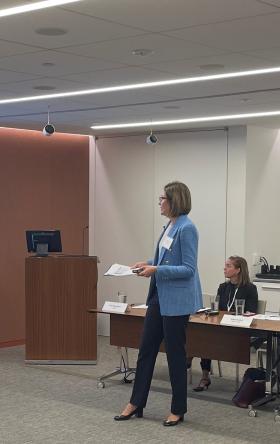

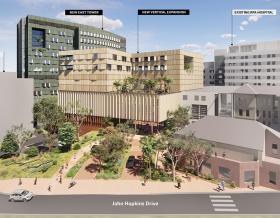





2747.png?h=1314d3d4&itok=rFs9mG95)

